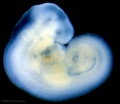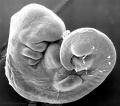Talk:Carnegie stage 13: Difference between revisions
No edit summary |
No edit summary |
||
| Line 1: | Line 1: | ||
==Carnegie Collection== | ==Carnegie Collection== | ||
1 | |||
19 | |||
87 | |||
76 | |||
112 | |||
116 | |||
148 | |||
186 | |||
239 | |||
248 | |||
407 | |||
463 | |||
523 | |||
588 | |||
786 | |||
800 | |||
808 | |||
826 | |||
836 | |||
963 | |||
1075 | |||
3956 | |||
4046 | |||
5541 | |||
5682 | |||
5874 | |||
6032 | |||
6469 | |||
6473 | |||
7433 | |||
7618 | |||
7669 | |||
7889 | |||
8066 | |||
8119 | |||
8147 | |||
8239 | |||
8372 | |||
8581 | |||
8967 | |||
9296 | |||
9297 | |||
9697 | |||
==Image Galleries== | ==Image Galleries== | ||
Revision as of 18:58, 23 April 2012
Carnegie Collection
1 19 87 76 112 116 148 186 239 248 407 463 523 588 786 800 808 826 836 963 1075 3956 4046 5541 5682 5874 6032 6469 6473 7433 7618 7669 7889 8066 8119 8147 8239 8372 8581 8967 9296 9297 9697
Image Galleries
Bright Field
Scanning EM
- Stage13 sem4.jpg
- Stage13 sem5.jpg
- Stage13 sem6.jpg
3D Animation
- 6mm Pig Embryo - approximately Human day 32 (Carnegie Stage 13/14 embryo) Stage13_3d01.flv
2004
A social biography of Carnegie embryo no. 836
Anat Rec B New Anat. 2004 Jan;276(1):3-7.
Morgan LM. Department of Sociology and Anthropology, Mount Holyoke College, 50 College Street, South Hadley, MA 01075-1426, USA. lmmorgan@mtholyoke.edu
Abstract
A tiny, sectioned embryo specimen known as Carnegie no. 836 has served as the prototype for Stage 13 (28-32 days) since the 1910s. Recently digitalized and reanimated for the 21st century, this singular specimen is now being used to develop 3D and 4D visualizations. Yet the social origins of the specimen have been largely forgotten. This essay traces the biography of 836 from its origins in a young woman's life, through sectioning and transformation into a scientific specimen, to its contemporary manifestations as a symbol of life. By reuniting the specimen with its story, we can appreciate how cultural attitudes toward embryo specimens have changed over the past century.
Copyright 2004 Wiley-Liss, Inc.
PMID: 14750188 http://www.ncbi.nlm.nih.gov/pubmed/14750188








